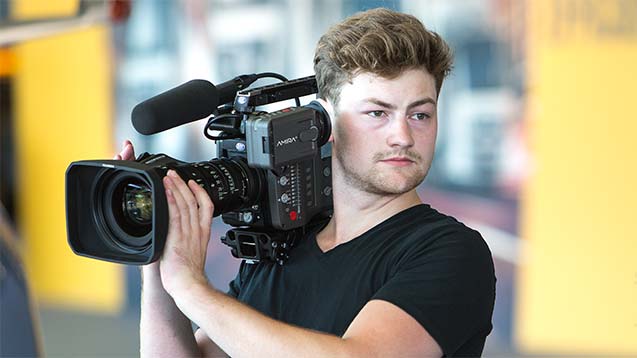Arri Brings Amira Digital Camera to Burbank for Early Preview
February 4, 2014
In advance of Amira’s launch at NAB, Arri has sent four prototypes of its new digital camera on tour. One camera is visiting the company’s Burbank facility for early previews and limited testing. The $40,000 shoulder-mount Amira, which uses the same imaging sensor as Arri’s $75,000 Alexa digital cinematography camera, is expected to ship in April. Lighter and smaller than the popular Alexa, the Amira is intended for productions such as documentaries and TV news magazine programs.
“The body is expected to weigh about 10 pounds, which Arri says would be roughly 30 percent lighter than the Alexa,” writes Carolyn Giardina for The Hollywood Reporter. “Amira includes 14 stops of dynamic range and can capture up to 200 frames per second. Details include a viewfinder that can be turned toward the camera operator or toward a focus puller.”
“We don’t see it as a replacement for Alexas, but traditional customers have been interested,” said Glenn Kennel, president and CEO of Arri.
DP Rodney Charters has been testing the Amira in the U.K., while NFL Films has been test driving a prototype in the U.S. Kennel sees a market that includes documentaries and sports highlights, one that would not impact the success of the Alexa.
“We intended to reach a different segment [who want a camera that is] lighter, smaller and cheaper,” he said. “But there will be some who use it where they are renting Alexas today. Some cinematographers are talking about using it for their second or third camera on TV projects for the ease of use.”
Arri has yet to offer 4K capability, while many in the industry are pushing for improvements beyond resolution in areas such as dynamic range, color gamut and frame rates.
“Dolby recently introduced its proposed ‘Dolby Vision’ spec that supports those characteristics from production through distribution,” writes Giardina.
“We feel we have the best dynamic range today on the market, combined with color fidelity and gamut that can really take advantage of the Dolby system,” Kennel told THR. “We are talking to them about how to make it work.”
“There’s interest from the studios and creative community to create better pixels — not just mores pixel – and support high dynamic range, high frame rates, and wider color gamut,” he added. “I think it’s the right way to go from a creative standpoint and also to make the content more impactful for the consumer.”


No Comments Yet
You can be the first to comment!
Leave a comment
You must be logged in to post a comment.